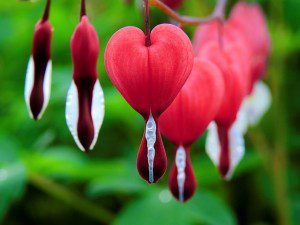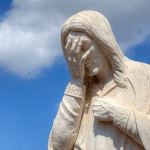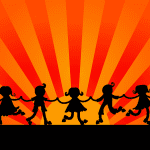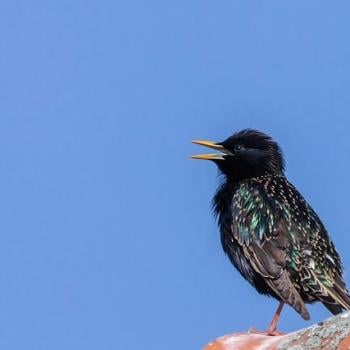
When I was a teenager, I was privileged to take part in a special program of BFA acting classes at the Ohio State University, as part of the pretentiously named “Summer Institute for the Gifted and Talented in the Arts.” For two weeks, from nine in the morning until five in the afternoon, I got to study theater under guest artists. It was, hands down, the most fun I’ve had in my life to this very day. It’s one of the few life experiences I’d like to have over in its entirety. We did yoga in the mornings, to the horror of my fellow homeschoolers; we learned improvisation, dance and how to read Shakespeare sonnets. We learned how to move gracefully, to trust fall and to make masks.
We also took a curious class called “eurythmics.” All of the students at the Summer Institute– the visual art, dance, music and theater majors– were required to take eurythmics together. But nobody ever told me what eurythmics is (or are). The topic of the class was not stated for us. We all just filed into a dance studio, took off our shoes, and lay down on the floor. A perky woman played on the djimbe drum and instructed us to sit up, in time with her drumming, in four counts, and then to lie down in four counts. “One, two, three, four,” she chanted. “Four-counts-to-get-you-back-down-to-the-floor. One, two, three, four, four-counts-to-get-you-back-down-to-the-floor.” Then she had us do it again, sitting up and lying down in two counts each. Then two to sit and four to lie down, and then the reverse. Then we lifted just one arm or leg, in time to the music. Then we had to improvise our own humiliatingly awful movements in time to the djimbe, in front of everyone. Then the whole class lined up, linked hands and danced something resembling the Hora.
For the rest of the Summer Institute, the professors kept referring back to our eurythmics class. Every time we did an improvisation exercise, one professor would yell “Don’t lose the…” and we’d all shout “Pulse!” All art has a pulse. The pulse is most evident in music and formal verse poetry; there it’s called “rhythm.” But all art does have a pulse. Free verse and prose writing have pulse, and if you can’t tap into that pulse you will never be able to write beautifully. Writers understand this, but it’s difficult to demonstrate to those who don’t know. If the words you’re writing don’t line up with a sort of unconscious, unvoiced rhythm– either to follow it or to occasionally break it deliberately, for emphasis– then they’re not the right words, and you have to try again. Theater certainly has a pulse that’s even harder to describe than the pulse of writing. If you lose the pulse, your performance falls apart, and the audience loses you. Visual art has a pulse as well. Color, light, placement, the way the subject is framed; all of these work together according to a certain pattern, or else they break the pattern deliberately in order to be jarring. All good art conforms to this constant, omnipresent pulse. If you can’t follow the pulse, you can’t make art.
All art has a pulse because art reveals Creation, and all Creation has a pulse. There are patterns and pulses everywhere in nature, from the bloodstreams of animals to the orbits of the planets to the molecular structure of crystals. Everything in nature plays into the pulse, the pulse that artists imitate when they make art, the pulse I learned to recognize lying on the floor in a BFA eurythmics class.
And I know through faith a more wondrous mystery.













